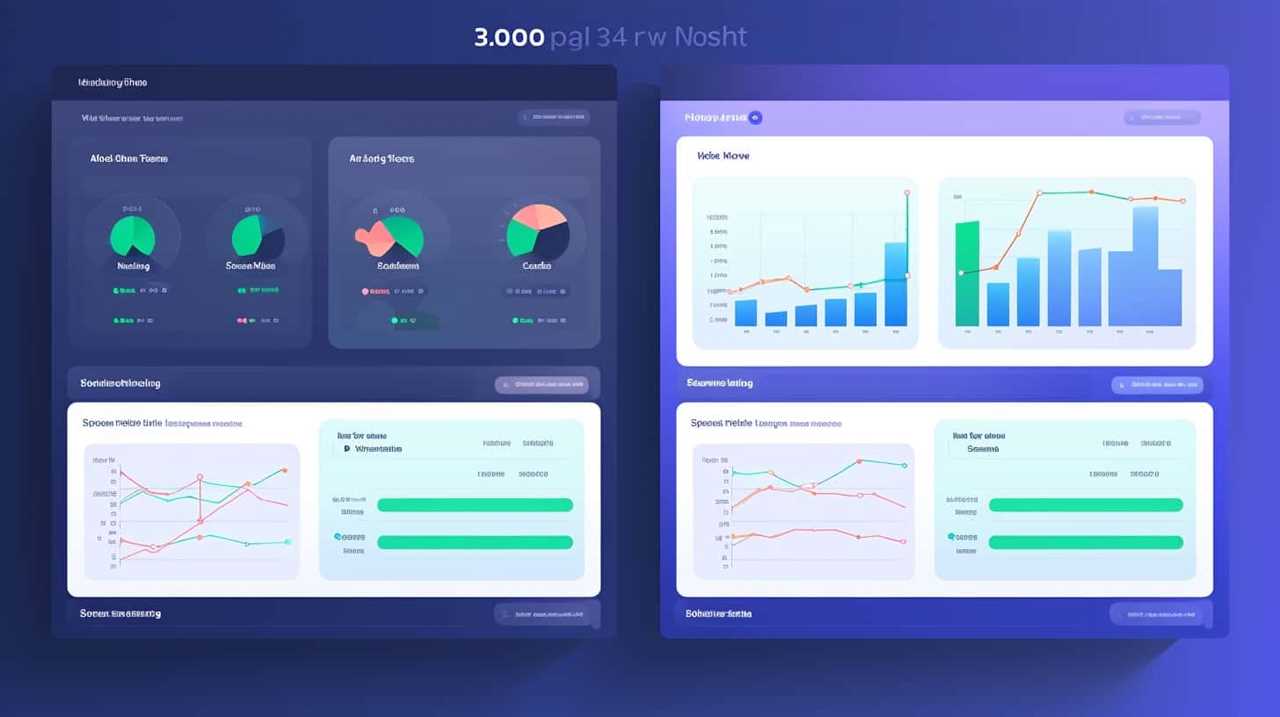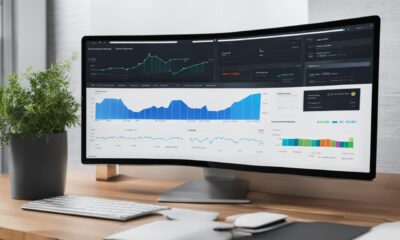Holistic SEO
Sustaining SEO Content: 11 Tips for Consistent Quality

Having troubles keeping your SEO content up to par? Search no more! We have put together eleven tips from experts designed to help you create content of consistently high quality.
From conducting thorough keyword research to staying up to date with the latest SEO trends, we’ve got you covered.
With our guidance, you’ll be able to optimize your meta tags, enhance user experience, and effectively promote your content on social media.
Don’t let your SEO efforts go to waste – follow our tips for sustained success!

Key Takeaways
- Conduct thorough keyword research to identify relevant and high-ranking keywords for your content
- Regularly update and refresh content to engage the audience and maintain a strong online presence
- Optimize website navigation and mobile accessibility for a seamless user experience
- Monitor and analyze SEO performance using tools like Google Analytics and SEMrush to continuously improve and adapt SEO strategy
Conduct Thorough Keyword Research
To ensure consistent quality in our SEO content, we conduct thorough keyword research. This process involves analyzing long tail keywords and conducting competitor analysis.
Long tail keywords are specific phrases that users search for, and by incorporating them into our content, we can target a more niche audience. This helps us stand out from our competitors and attract highly relevant traffic to our website.
Additionally, competitor analysis allows us to identify the keywords that our competitors are ranking for and understand their content strategy. By gaining insights from their success, we can develop a more effective content strategy for ourselves.
Conducting thorough keyword research is crucial in optimizing our SEO content and staying ahead in the digital landscape.

Now, let’s delve into the next section and discuss how we develop a content strategy.
Develop a Content Strategy
When it comes to developing a content strategy, targeting the right audience is crucial. By conducting thorough target audience analysis, we can gain insights into their preferences, needs, and pain points, enabling us to create content that resonates with them.
Additionally, utilizing effective keyword research techniques allows us to identify relevant and high-performing keywords, ensuring our content is optimized for search engines.
To maintain consistency and organization, creating a content calendar helps us plan and schedule our content, ensuring a steady flow of quality content for our audience.

Target Audience Analysis
We analyze our target audience to develop a content strategy that effectively engages and satisfies their needs. Understanding the demographics, interests, and behaviors of our audience allows us to tailor our content to their preferences.
Here are five key steps we take in our target audience analysis:
- Target Audience Segmentation: We divide our audience into distinct groups based on factors such as age, location, and interests. This helps us create targeted content that resonates with specific segments.
- Competitor Analysis: We study our competitors’ strategies and identify gaps in their content offerings. This allows us to differentiate ourselves and provide unique value to our audience.
- Keyword Research: We conduct thorough keyword research to identify the terms and phrases our audience uses when searching for information. This helps us optimize our content for search engines and increase visibility.
- Social Media Listening: We monitor social media platforms to understand the conversations and topics that are relevant to our audience. This enables us to create content that addresses their current interests and needs.
- Feedback and Analytics: We regularly gather feedback from our audience and analyze website analytics to measure the effectiveness of our content strategy. This helps us make data-driven decisions and continuously improve our content.
Keyword Research Techniques
How do we effectively develop a content strategy through keyword research techniques that ensure consistent quality in our SEO content?
One key aspect of keyword research is identifying long tail keywords, which are specific and targeted phrases that potential readers may use when searching for information. By incorporating these long tail keywords into our content, we can attract a more qualified audience and increase the likelihood of our content being found by search engines.

Another important technique is competitor analysis, where we analyze the keywords and content strategies used by our competitors to gain insights and identify opportunities. This allows us to stay ahead of the competition and create more valuable and relevant content.
Content Calendar Creation
To effectively develop a content strategy, it’s crucial to establish a comprehensive content calendar that outlines our plan for creating and publishing SEO content. A content calendar serves as a roadmap for our content creation strategy and allows us to stay organized and consistent.
Here are five key steps to effective content calendar management:
- Identify goals and objectives: Determine what we want to achieve with our content and align it with our overall marketing strategy.
- Keyword research: Conduct thorough keyword research to identify relevant topics and optimize our content for search engines.
- Define target audience: Understand our target audience’s needs and preferences to create content that resonates with them.
- Create a content schedule: Set deadlines and milestones for content creation and publication to ensure a consistent flow of high-quality content.
- Track and analyze performance: Continuously monitor and evaluate the performance of our content to identify areas of improvement and refine our content strategy.
By following these steps, we can develop a well-structured content calendar that supports our content creation strategy and helps us achieve our SEO goals.

Now, let’s move on to the next step of optimizing our meta tags and descriptions to further enhance our SEO efforts.
Optimize Your Meta Tags and Descriptions
When optimizing SEO content, it’s essential to focus on optimizing meta tags and descriptions for better search engine visibility. Optimizing meta tags and descriptions involves incorporating relevant keywords that accurately describe the content of the page. By using long tail keyword optimization, you can target specific search queries and attract more qualified traffic to your website.
Meta tags are HTML elements that provide information about a webpage to search engines and website visitors. These tags include the title tag, which appears as the clickable headline in search engine results, and the meta description, a brief summary of the page’s content. By optimizing these tags with targeted keywords, you can improve your search engine rankings and attract more clicks from users.
When crafting meta tags and descriptions, it’s crucial to be concise, engaging, and accurately represent the content of the page. Avoid stuffing keywords or creating misleading descriptions, as this can negatively impact your SEO efforts. Instead, focus on creating compelling and informative meta tags and descriptions that entice users to click on your website in search results.

Focus on User Experience and Readability
When it comes to creating engaging SEO content, we need to focus on user experience and readability.
One important aspect is designing our content in a way that appeals to our target audience and keeps them engaged.
We also need to optimize our content for mobile devices, ensuring that it’s easily accessible and readable on different screen sizes.
Additionally, improving site navigation helps users find the information they’re looking for quickly and easily, enhancing their overall experience on our website.

Engaging Content Design
In optimizing SEO content for consistent quality, we prioritize engaging content design that focuses on enhancing user experience and readability. The way we present our content plays a crucial role in capturing the attention of our audience and keeping them engaged.
To achieve this, we employ various interactive design techniques that make our content more enjoyable and relatable. Here are five key strategies we use:
- Incorporating visually appealing elements such as images, videos, and infographics.
- Using clear and concise headings to break up the text and improve readability.
- Implementing interactive features like quizzes, polls, and surveys to encourage user participation.
- Optimizing our content for mobile devices to ensure a seamless user experience across different platforms.
- Incorporating storytelling techniques to create a narrative that captivates the reader’s interest.
Optimizing for Mobile
To ensure a seamless user experience and improve readability, we prioritize optimizing our SEO content for mobile devices. Mobile optimization is a critical aspect of our strategy, as more and more people are accessing the internet through their smartphones and tablets. By implementing responsive design, we ensure that our content adapts to different screen sizes and resolutions, providing a consistent and enjoyable experience for our users.
In addition to mobile optimization, we also focus on enhancing readability on mobile devices. We understand that reading on smaller screens can be challenging, so we format our content with shorter paragraphs, bullet points, and subheadings to make it easier to scan and digest. By considering both mobile optimization and readability, we provide a user-friendly experience that keeps our audience engaged and coming back for more.

| Key Considerations | Benefits |
|---|---|
| Responsive design | Ensures consistent user experience across devices |
| Shorter paragraphs, bullet points, and subheadings | Improves readability on mobile screens |
| Clear and concise content | Easy to scan and digest |
| Optimized images and videos | Faster loading times |
| Mobile-friendly navigation | Intuitive and easy to use |
Improving Site Navigation
One essential step in improving site navigation for a better user experience and readability is implementing clear and intuitive menu options. By providing users with easily identifiable and organized menu options, they can quickly find the information they need without frustration.
To further enhance site navigation, consider the following tips:
- Streamline the menu: Remove unnecessary items and prioritize the most important pages to reduce clutter and confusion.
- Use descriptive labels: Instead of generic terms, use specific and concise labels that accurately describe the content of each page.
- Provide a search bar: Include a search bar prominently on your website to allow users to quickly find what they’re looking for.
- Utilize breadcrumbs: Breadcrumbs provide users with a clear path of their navigation, making it easier for them to backtrack or explore related content.
- Optimize site architecture: Ensure that your website’s structure and hierarchy are logical and intuitive, allowing for efficient navigation.
Regularly Update and Refresh Your Content
We consistently update and refresh our content to ensure its relevance and effectiveness. Keeping our content up-to-date is crucial for maintaining a strong online presence and attracting organic traffic. Regularly refreshing our content not only improves search engine rankings, but also helps to engage our audience and establish ourselves as experts in our field. By regularly updating our content, we can provide our readers with the most accurate and valuable information available. This ensures that our website remains a go-to resource for those seeking mastery in our niche. To illustrate the importance of content refresh and update, here is a table showcasing the impact of regularly updating and refreshing our content:
| Without Regular Updates | With Regular Updates | |
|---|---|---|
| Search Rankings | Decreases | Increases |
| User Engagement | Decreases | Increases |
| Expert Authority | Diminishes | Strengthens |
| Organic Traffic | Declines | Improves |
Updating and refreshing our content is a key strategy in maintaining a successful SEO content strategy. It allows us to stay relevant, engage our audience, and establish ourselves as industry leaders.

Use Relevant and High-Quality Images
Using a variety of relevant and high-quality images is essential for enhancing the visual appeal and engagement of our SEO content. Images not only break up text and make it more visually appealing, but they also help convey information more effectively.
When it comes to image optimization, here are some key points to keep in mind:
- Choose images that are relevant to the topic and align with the overall message of the content.
- Select high-quality images that are clear, sharp, and visually appealing.
- Optimize images for web by compressing them without compromising on quality.
- Use descriptive file names and alt tags to improve accessibility and search engine optimization.
- Consider using unique and original images to stand out from competitors and provide a fresh perspective.
Incorporate Internal and External Links
When it comes to improving SEO and optimizing your content, incorporating internal and external links is essential. Link-building strategies and SEO optimization techniques play a crucial role in driving organic traffic to your website.
Link-Building Strategies
Incorporating internal and external links is a crucial aspect of effective link-building strategies for sustaining SEO content. By strategically including both types of links in your content, you can improve your website’s visibility in search engine results and drive more organic traffic.

Here are five key strategies to consider:
- Conduct thorough backlink analysis to identify high-quality external websites that can provide valuable backlinks to your content.
- Develop a strong internal linking structure within your website to guide users and search engines to relevant pages.
- Create engaging and informative content that naturally attracts external links from authoritative websites.
- Collaborate with influencers and industry experts to gain backlinks from their websites or social media platforms.
- Monitor and regularly update your existing internal and external links to ensure they remain relevant and functional.
SEO Optimization Techniques
To continue our discussion on sustaining SEO content and link-building strategies, let’s now delve into the effective SEO optimization techniques that incorporate both internal and external links.
SEO optimization techniques play a crucial role in improving search engine rankings and driving organic traffic to your website. When it comes to internal linking, it’s important to strategically place links within your content to guide readers to related articles or pages on your website. This not only helps with navigation but also enhances the overall user experience.
On the other hand, external linking involves linking to reputable and relevant websites, which can improve the credibility and authority of your own content.

To optimize your SEO efforts, it’s essential to conduct thorough keyword research strategies to identify the most relevant and high-ranking keywords for your content. By incorporating these SEO optimization techniques, you can boost your website’s visibility, increase organic traffic, and ultimately achieve higher search engine rankings.
Pay Attention to Page Load Speed
Improving page load speed is crucial for maintaining high-quality SEO content. As website visitors have increasingly shorter attention spans, a slow-loading page can lead to high bounce rates and poor user experience.
To ensure your website performs at its best, consider implementing the following strategies:
- Improve server response time: Optimize your server configuration and reduce the time it takes for your server to respond to requests.
- Minimize HTTP requests: Combine and compress CSS and JavaScript files, reduce the number of images, and use CSS sprites to reduce the number of HTTP requests made by the browser.
- Enable browser caching: Set the appropriate caching headers to allow browsers to store and reuse static resources, reducing the need to download them again.
- Optimize images: Compress and resize images to reduce file size without compromising quality.
- Use a content delivery network (CDN): Distribute your website’s static content across multiple servers geographically to reduce the distance between the user and the server, improving load times.
By implementing these strategies, you can enhance your website’s page load speed and provide a better user experience, ultimately boosting your SEO efforts.

Now, let’s explore how you can leverage social media for content promotion.
Leverage Social Media for Content Promotion
After optimizing your website’s page load speed, we can now explore how we can leverage social media for content promotion.
Social media engagement plays a crucial role in increasing your content’s visibility and driving traffic to your website. By actively engaging with your audience on platforms like Facebook, Twitter, and Instagram, you can create a community around your brand and establish yourself as a thought leader in your industry.
Additionally, influencer collaborations can help amplify your content reach and attract a wider audience. Partnering with influencers who have a strong following in your niche can expose your content to their followers and generate valuable backlinks.

Remember to create shareable content and optimize your posts for social media platforms to maximize your content’s reach and engagement.
Monitor and Analyze Your SEO Performance
In order to effectively monitor and analyze our SEO performance, we need to utilize tools and metrics that provide valuable insights into our website’s visibility and rankings. By tracking our SEO performance, we can identify areas for improvement and make informed decisions to optimize our website’s performance.
Here are five key strategies for monitoring and analyzing SEO performance:
- Utilize SEO performance tracking tools like Google Analytics and SEMrush to measure website traffic, keyword rankings, and user engagement.
- Conduct regular competitor analysis to benchmark our performance against industry leaders and identify opportunities for improvement.
- Monitor key metrics such as organic search traffic, conversion rates, and bounce rates to gauge the effectiveness of our SEO efforts.
- Analyze the performance of individual web pages to identify high-performing content and areas that require optimization.
- Continuously monitor and adapt our SEO strategy based on the insights gained from performance tracking and competitor analysis.
Stay up to Date With SEO Trends and Best Practices
To stay up to date with SEO trends and best practices, we need to consistently monitor and adapt our strategies based on the insights gained from performance tracking and competitor analysis. As search engines evolve, it’s crucial for us to stay ahead of the game and optimize our content accordingly. Here are some key SEO trends and updates that we should be aware of:

| Trend/Update | Importance |
|---|---|
| Mobile Optimization | High |
| Voice Search | Medium |
| User Experience | High |
Mobile optimization remains a top priority as more users access the internet through their smartphones. Voice search is also gaining traction, so optimizing for voice queries is essential. Additionally, user experience plays a crucial role in SEO rankings, so it’s important to focus on factors like page load speed and intuitive navigation. By staying updated on these SEO trends and implementing best practices, we can ensure our content remains relevant and competitive in the ever-changing digital landscape.
Frequently Asked Questions
How Long Does It Take to See Results From SEO Content Efforts?
Measuring success and tracking progress in SEO content efforts can vary depending on various factors. It’s important to consistently monitor metrics and make data-driven adjustments to improve results over time.
Can I Use the Same Keywords for Multiple Pieces of Content?
Yes, we can use the same keywords for multiple pieces of content. However, it’s important to conduct thorough keyword research to ensure that the keywords are relevant, competitive, and can effectively drive traffic to our website.
Is It Necessary to Update Old Content or Can I Focus on Creating New Content?
Updating old content is essential for maintaining SEO rankings. While creating new content is important, refreshing existing pieces ensures they remain relevant and valuable. Both strategies are necessary for long-term success.

How Do I Know if My Content Is Reaching the Right Target Audience?
To know if our content is reaching the right target audience, we analyze our target audience and measure content engagement. This helps us optimize our content to ensure it resonates with our desired audience and drives the desired results.
What Are the Best Practices for Optimizing Images for Seo?
When it comes to optimizing images for SEO, there are several key techniques to keep in mind. One important aspect is the use of alt tags, which play a crucial role in improving search engine visibility.
Conclusion
In the ever-changing world of SEO, maintaining consistent quality content is crucial.
By conducting thorough keyword research, developing a content strategy, and optimizing meta tags and descriptions, we can ensure our content ranks well and reaches our target audience.

Regularly updating and refreshing our content, paying attention to page load speed, and leveraging social media for promotion are also essential.
By monitoring and analyzing our SEO performance and staying up to date with trends and best practices, we can stay ahead of the game and continue to thrive in the digital landscape.
Holistic SEO
Unlocking Holistic SEO: Top Link Building Techniques

We have identified the key strategies for achieving success in SEO: advanced link-building methods.
Did you know that a whopping 91% of web pages don’t receive organic traffic from Google? That’s where our expertise comes in.
With guest blogging, broken link building, influencer outreach, social bookmarking, and resource link building, we’ll show you how to boost your website’s visibility and drive targeted traffic.
Get ready to master the art of link building and take your SEO game to the next level.
Key Takeaways
- Guest blogging and influencer outreach can establish authority, improve search engine rankings, and attract new visitors and potential customers.
- Broken link building and resource link building can improve website authority, search engine rankings, and drive targeted traffic by identifying broken links and offering replacement links.
- Social bookmarking increases website traffic, enhances online visibility, and contributes to SEO efforts by generating quality backlinks.
- Resource link building in SEO builds website authority, increases visibility in search engine rankings, enhances credibility and trustworthiness, and generates organic traffic.
Guest Blogging
Guest blogging is a proven strategy that enhances website authority and improves overall search engine rankings. There are several advantages of guest blogging. Firstly, it allows you to establish yourself as an authority in your industry by sharing your expertise and insights with a wider audience. This helps to build your credibility and gain recognition as a thought leader.
Additionally, guest blogging allows you to tap into new audiences and expand your reach beyond your own website. By publishing your content on high-quality, relevant websites, you can attract new visitors and potential customers.
To find guest blogging opportunities, start by identifying websites that are relevant to your industry and have a strong online presence. Look for websites that accept guest posts and have a similar target audience as yours. Reach out to the website owners or editors with a well-crafted pitch highlighting your expertise and the value you can provide to their audience. Networking with other bloggers and industry influencers can also help you discover guest blogging opportunities.
Remember to always follow the guidelines and requirements provided by the website and provide high-quality, valuable content to maximize the benefits of guest blogging.
Broken Link Building
When implementing a comprehensive SEO strategy, one effective technique is broken link building. This involves identifying and replacing broken links on relevant websites to improve search engine rankings. Broken link building can be a powerful tool for link reclamation and boosting your website’s authority.
Here are three key steps to successfully implement this strategy:
- Identify broken links: Conduct a thorough competitor analysis to find websites in your niche that have broken links. Tools like Ahrefs and SEMrush can help you identify these opportunities.
- Reach out to website owners: Once you’ve identified broken links, reach out to the website owners or administrators and inform them about the broken links on their site. Offer to replace the broken link with a relevant and valuable resource from your own website.
- Create high-quality content: To increase the chances of getting your replacement link accepted, create high-quality content that provides value to the website’s audience. This will make your outreach more persuasive and increase the likelihood of success.
By effectively implementing broken link building and link reclamation strategies, you can improve your website’s authority and search engine rankings.
Now, let’s move on to the next technique: influencer outreach.
Influencer Outreach
After successfully implementing broken link building, we can now delve into the next technique: reaching out to influencers to boost our website’s authority. Influencer outreach involves forming partnerships with micro influencers in our industry and leveraging their influence to promote our brand and content. This strategy is a key component of influencer marketing strategies, which aim to tap into the large and engaged audiences that influencers have cultivated. By partnering with relevant influencers, we can increase our brand visibility, drive traffic to our website, and improve our search engine rankings. To effectively implement influencer outreach, we need to identify the right influencers, build genuine relationships with them, and create valuable content for them to share with their followers. This will not only boost our website’s authority but also increase our credibility and reach within our target audience.
| Benefits of Influencer Outreach | Best Practices for Micro Influencer Partnerships | Tips for Effective Influencer Marketing |
|---|---|---|
| Increased brand visibility | Identify influencers with engaged and relevant audiences | Clearly define goals and objectives |
| Improved search engine rankings | Build genuine relationships with influencers | Create valuable and shareable content |
| Drive targeted traffic to website | Collaborate on content creation and promotion | Track and measure campaign performance |
As we explore the power of influencer outreach, it is important to note that social bookmarking is another effective technique that can enhance our website’s SEO.
Social Bookmarking
Let’s explore the benefits of incorporating social bookmarking into our holistic SEO strategy.
Social bookmarking is a powerful technique that can help boost our website’s visibility and improve our search engine rankings. Here are three key reasons why social bookmarking should be part of our SEO arsenal:
- Increased website traffic: By submitting our content to social bookmarking sites, we can attract more visitors to our website. These platforms allow users to discover and share interesting content, which can lead to a significant increase in traffic.
- Enhanced online visibility: Social bookmarking sites have a large user base, making them an ideal platform to promote our brand and content. By bookmarking our website on these platforms, we can increase our online visibility and reach a wider audience.
- Improved search engine rankings: Social bookmarking can also contribute to our SEO efforts by generating quality backlinks. When other users bookmark and share our content, it signals to search engines that our website is valuable and trustworthy, which can positively impact our search engine rankings.
Incorporating social bookmarking strategies into our holistic SEO approach can yield significant benefits for our website’s visibility and organic traffic.
Now, let’s dive into the next section on resource link building.
Resource Link Building
Now, we can explore the benefits of incorporating resource link building into our holistic SEO strategy. Resource link building involves creating and sharing valuable content that attracts links from other websites, ultimately improving our website’s authority and visibility in search engine rankings. One effective tactic is content curation, where we gather and share relevant and high-quality content from various sources, positioning ourselves as a trusted resource in our industry. Another tactic is directory submission, where we submit our website to relevant directories, increasing our online presence and generating backlinks. By implementing these strategies, we can enhance our website’s credibility, increase organic traffic, and improve our overall SEO performance.
| Pros | Cons |
|---|---|
| Builds website authority | Time-consuming process |
| Increases visibility in search engine rankings | Requires continuous effort and updates |
| Enhances credibility and trustworthiness | Requires creating and curating valuable content |
| Generates organic traffic | May not guarantee immediate results |
| Improves overall SEO performance | Requires careful selection of directories |
Incorporating resource link building into our SEO strategy can yield long-term benefits and contribute to the success of our online presence.

Frequently Asked Questions
How Can I Find Websites That Accept Guest Blog Posts in My Niche?
To find websites that accept guest blog posts in our niche, we focus on finding niche-relevant websites for guest blogging outreach. We approach industry-specific bloggers for guest posting opportunities, ensuring our content aligns with their audience.
What Are Some Effective Strategies for Reaching Out to Influencers for Link Building Purposes?
When it comes to reaching influencers for link building, we’ve found some effective strategies. By leveraging our connections, crafting personalized pitches, and offering value, we’ve seen great success in building quality links.
Is Social Bookmarking Still a Relevant Link Building Technique in Today’s SEO Landscape?
Yes, social bookmarking is still a relevant link building technique in today’s SEO landscape. It can have a positive impact on SEO rankings by increasing website visibility and traffic. Additionally, it complements content marketing strategies by promoting valuable content to a wider audience.
Can You Provide Some Tips for Identifying Broken Links on Other Websites for the Purpose of Building Links?
Sure, we can provide tips for identifying broken links on other websites for the purpose of building links. It’s important to use tools like Check My Links and Broken Link Checker to find broken links.
How Can I Determine the Credibility and Authority of Potential Resource Link Building Opportunities?
To determine link credibility and evaluate resource authority, we research the website’s domain authority, check for relevant and trustworthy content, and analyze the site’s backlink profile. These steps help us identify high-quality resource link building opportunities.
What Are the Effective Link Building Strategies for Mastering Holistic SEO?
Effective seo link building strategies are crucial for mastering holistic SEO. By building high-quality backlinks from authoritative websites, you can boost your website’s visibility and organic rankings. Some effective strategies include guest blogging, creating and promoting valuable content, leveraging social media, and participating in relevant online communities. These techniques help establish your website as a trustworthy source of information, improving its overall SEO performance.
Conclusion
In our quest for holistic SEO, we’ve explored various link building techniques.
Through guest blogging, we’ve opened doors to new audiences and built relationships.
Broken link building has allowed us to fix broken connections while gaining valuable backlinks.
Influencer outreach has empowered us to collaborate with industry leaders and expand our reach.
Social bookmarking has helped us organize and share valuable resources.
And resource link building has solidified our expertise and credibility.
By utilizing these techniques, we can unlock the full potential of our SEO strategies.

Holistic SEO
What Are Top Practices for Seo-Social Media Integration?

Looking for a fresh strategy to seamlessly integrate SEO and social media? Look no further! We have compiled the best tactics to enhance your online visibility and improve your search rankings.
From aligning keywords and hashtags to optimizing social media profiles, these strategic steps will enhance your visibility and engagement. With the power of social sharing buttons and SEO-optimized content, you’ll be unstoppable.
Stay ahead of the game by monitoring and analyzing social media metrics. It’s time to master the art of seamless integration.
Let’s dive in!
Key Takeaways
- Understanding the relationship between keywords and hashtags
- Ensuring consistent branding across all social media platforms
- Making it easy for audience to share content across platforms
- Utilizing relevant keywords in social media posts
Aligning Keywords and Hashtags
To effectively align keywords and hashtags, we must understand the relationship between them. Hashtags and SEO strategies play a crucial role in optimizing our social media posts. By integrating relevant keywords into our posts, we can improve our search engine rankings and increase visibility to our target audience.
When selecting hashtags, it’s important to choose ones that are relevant to our content and industry. This will help attract the right audience and improve engagement. Additionally, using popular hashtags can also increase our reach and exposure.
By strategically combining keywords and hashtags, we can create a powerful synergy that enhances our SEO efforts and maximizes our social media impact.
Now, let’s move on to the next section about optimizing social media profiles, where we’ll explore further strategies for effective integration.
Optimizing Social Media Profiles
How can we optimize our social media profiles for SEO-Social Media integration?
Optimizing our social media profiles is crucial for effective social media branding and cross channel promotion. Here are three key steps to optimize our profiles:
- Consistent Branding: Ensure that our social media profiles reflect our brand identity consistently. This includes using our brand logo, colors, and fonts across all platforms.
- Keyword Optimization: Conduct keyword research to identify relevant keywords for our industry. Incorporate these keywords strategically in our profile descriptions, bio sections, and hashtags to improve search engine visibility.
- Complete Profile Information: Fill out all the necessary fields in our social media profiles. This includes providing a clear and concise description, adding links to our website or other relevant platforms, and including contact information for our audience to easily reach out to us.
Integrating Social Sharing Buttons
We integrate social sharing buttons on our website to enhance user engagement and encourage the sharing of our content across various social media platforms. By incorporating social sharing buttons, we make it easy for our audience to share our content with their networks, increasing our reach and visibility. Not only does this help to drive traffic to our website, but it also allows us to measure engagement through the number of shares, likes, and comments our content receives.
Additionally, we can leverage influencer partnerships to further amplify our content. By collaborating with influencers in our industry, we can tap into their large and engaged audience to increase the visibility and credibility of our content. This integration of social sharing buttons and influencer partnerships is essential in maximizing the impact of our SEO-social media integration efforts.
Moving forward, we’ll now explore the next subtopic of sharing SEO-optimized content on social media.
Sharing SEO-optimized Content on Social Media
As we delve into the topic of ‘Sharing SEO-optimized Content on Social Media’, it’s crucial to emphasize the importance of crafting compelling and keyword-rich posts to enhance our online visibility and attract a wider audience.
When it comes to sharing SEO-optimized content on social media, there are several strategies we can employ to maximize engagement and build brand awareness:
- Utilize relevant keywords: Incorporate targeted keywords into your social media posts to increase visibility and improve search engine rankings.
- Optimize meta tags and descriptions: When sharing content on social media platforms, ensure that your meta tags and descriptions are optimized with relevant keywords to improve click-through rates and attract more attention.
- Include captivating visuals: Visual content is highly engaging and can capture the attention of social media users. Incorporate eye-catching images, videos, and infographics to make your posts stand out and encourage sharing.
Monitoring and Analyzing Social Media Metrics
After effectively sharing SEO-optimized content on social media, it’s important to monitor and analyze social media metrics to gauge the success of our efforts.
Monitoring social media metrics allows us to gain valuable insights into our audience’s engagement and measure the effectiveness of our strategies. By tracking metrics such as likes, shares, comments, and click-through rates, we can determine which content resonates best with our audience and adjust our approach accordingly.
Additionally, monitoring social media metrics enables us to identify trends and patterns in our audience’s behavior, helping us tailor our content to their preferences and interests.
It’s essential to use analytics tools to gather and analyze this data accurately, allowing us to make data-driven decisions and optimize our social media strategies for maximum impact.
Frequently Asked Questions
How Do I Choose the Right Keywords and Hashtags to Align With My Social Media Posts?
When choosing keywords and hashtags for our social media posts, we focus on relevance and alignment with our content. We follow best practices to ensure effective incorporation and maximize visibility in search results.
What Are Some Ways to Optimize My Social Media Profiles for Better Seo?
To optimize our social media profiles for better SEO, we focus on refining our online presence. We strategically optimize our profiles, ensuring they align with our brand and include relevant keywords to improve search engine visibility.
How Can I Integrate Social Sharing Buttons on My Website to Improve SEO and Social Media Integration?
To improve SEO and social media integration, we can increase user interaction on social media posts and run targeted ads. Adding social sharing buttons on our website is a great way to facilitate this engagement.
Are There Any Tips or Strategies for Sharing Seo-Optimized Content on Social Media Platforms?
We’ll share some tips and strategies for optimizing social media content for SEO. By implementing best practices, we can drive organic traffic through social media platforms and improve our overall online presence.
What Are Some Effective Tools or Methods for Monitoring and Analyzing Social Media Metrics to Measure the Success of My Seo-Social Media Integration Efforts?
Looking to measure the success of your SEO-social media integration efforts? Wondering which tools and methods are most effective for monitoring and analyzing social media metrics? We’ve got you covered with the best practices and tools for tracking your progress.
How Can SEO Techniques Enhance Social Media Integration for Influencer Marketing?
SEO techniques are essential for effective influencer marketing on social media platforms. By implementing powerful seo techniques for influencer marketing, brands can optimize their content to reach a wider audience. This includes keyword research, on-page optimization, and link building strategies, which can improve visibility and increase engagement. Therefore, through better social media integration, brands can leverage SEO techniques to enhance their influencer marketing efforts.
How Does Keyword Research Play a Role in Seo-Social Media Integration?
Keyword research for creative websites is crucial in SEO-social media integration. By identifying relevant and high-performing keywords, businesses can optimize their content for search engines and target specific audiences on social media platforms. This research helps create engaging and shareable content, improving online visibility and reaching a wider audience organically. It ensures that businesses align their SEO and social media strategies effectively, driving targeted traffic and increasing brand awareness.
Conclusion
In conclusion, integrating SEO and social media is crucial for maximizing online visibility and engagement.
One interesting statistic to note is that businesses that effectively integrate social media into their SEO strategy are 13% more likely to see improved search rankings.
By aligning keywords and hashtags, optimizing profiles, and sharing SEO-optimized content, businesses can boost their online presence and drive more traffic to their websites.
Monitoring and analyzing social media metrics will further help in refining the strategy for better results.
Holistic SEO
Mastering Holistic SEO Through Effective Link Building Strategies

We are diving deeply into the world of comprehensive SEO, refining the skill of successful link-building tactics.
Link building is the backbone of search engine optimization, and we’re here to show you the way.
By building quality backlinks, fostering relationships, leveraging social media, and incorporating content marketing, we’ll help you reach new heights in your SEO journey.
Get ready to monitor and optimize your link profile like never before.
Let’s embark on this mastery together.
Key Takeaways
- Quality backlinks are crucial for improving search engine rankings and increasing organic traffic.
- Collaborating with industry influencers through guest blogging helps establish credibility, authority, and drives traffic.
- Leveraging social media platforms can attract influencers, promote content, and generate backlinks.
- Incorporating content marketing, such as guest blogging and creating link-worthy content, attracts high-quality backlinks and establishes the website as a valuable resource.
Importance of Quality Backlinks
Quality backlinks are crucial for improving our website’s search engine rankings and increasing organic traffic. One effective way to build quality backlinks is through guest blogging. By partnering with influential bloggers or websites in our industry, we can create valuable content that includes a link back to our website. This not only helps to establish our credibility and authority in the industry but also drives traffic to our site from the influencer’s audience.
Additionally, guest blogging allows us to reach a wider audience and build relationships with other professionals in our field. Another strategy for acquiring quality backlinks is through influencer partnerships. Collaborating with industry influencers can help us gain exposure and earn valuable backlinks from their websites. By working together on content creation or promoting each other’s work, we can mutually benefit and boost our search engine rankings.
Building Relationships for Link Acquisition
To enhance our link acquisition efforts, we actively engage in building relationships with influential individuals and reputable websites. Building strong relationships is crucial for successful link outreach and influencer partnerships. Here are three strategies we employ to establish and nurture these relationships:
- Identifying relevant influencers: We research and identify influential individuals and websites in our industry that align with our brand values and target audience. This helps us create a targeted list of potential partners for link acquisition.
- Personalized outreach: We believe in the power of personalized communication. By crafting personalized emails or messages, we show our genuine interest in collaborating and provide value to the influencers or websites we reach out to. This approach increases the chances of building fruitful relationships.
- Offering mutual benefits: We understand that successful partnerships are built on mutual benefits. We offer influencers and websites something valuable in return, such as guest blogging opportunities or social media promotion. This helps establish trust and encourages them to link back to our website.
By focusing on building relationships through effective link outreach and influencer partnerships, we can strengthen our link acquisition strategy and drive more traffic to our website.
Now, let’s explore another essential aspect of link building – leveraging social media for link building.
Leveraging Social Media for Link Building
We actively utilize social media platforms to leverage link building opportunities. Social media has become a powerful tool for building relationships, promoting content, and increasing brand visibility.
By engaging with our target audience on platforms such as Facebook, Twitter, and Instagram, we can attract influencers who can help promote our content and generate valuable backlinks. Influencer collaborations allow us to tap into their large following and reach a wider audience.
Additionally, user generated content plays a crucial role in our link building strategy. Encouraging our audience to create and share content related to our brand not only boosts engagement but also increases the chances of obtaining organic backlinks.
Incorporating Content Marketing in Link Building
Content marketing plays a vital role in our link building strategy. By incorporating content marketing into our link building efforts, we can’t only attract high-quality backlinks but also establish our website as a valuable resource in our industry.
Here are three effective ways to incorporate content marketing in link building:
- Guest blogging opportunities: By writing informative and engaging guest posts for reputable websites in our niche, we can build relationships with other industry experts, gain exposure to their audience, and earn valuable backlinks to our own website.
- Influencer collaborations: Partnering with influencers in our industry can help us create compelling content that resonates with our target audience. By leveraging their expertise and reach, we can attract more traffic, engagement, and ultimately, gain valuable backlinks.
- Creating link-worthy content: By consistently creating high-quality, valuable, and shareable content, we increase the chances of attracting organic backlinks. This can be achieved through informative blog posts, comprehensive guides, infographics, videos, and other forms of content that provide value to our audience.
Incorporating content marketing into our link building strategy not only helps us acquire valuable backlinks but also positions us as an authoritative and trusted source in our industry.
Monitoring and Optimizing Link Profile
Effective monitoring and optimization of our link profile is essential for mastering holistic SEO.
Link profile analysis allows us to gain insights into the quality and quantity of our backlinks, helping us identify areas for improvement. By regularly monitoring our link profile, we can identify any toxic or low-quality links that may harm our website’s rankings.
This analysis also helps us understand the anchor text distribution and the relevance of the linking domains, allowing us to make informed decisions about our link building strategies.
Once we’ve identified areas for improvement, link profile management comes into play. This involves removing or disavowing toxic links, acquiring high-quality links, and diversifying our link sources.
Frequently Asked Questions
How Do I Determine the Quality of a Backlink?
To determine the quality of a backlink, we analyze factors such as domain authority, relevancy, and anchor text. By assessing these criteria, we can gauge the effectiveness of our link building strategies.
What Are Some Effective Ways to Build Relationships for Link Acquisition?
Guest blogging and influencer outreach are effective ways to build relationships for link acquisition. They allow us to tap into established networks and gain valuable backlinks. By collaborating with industry experts, we can expand our reach and enhance our SEO strategy.
Can Social Media Platforms Other Than Facebook and Twitter Be Used for Link Building?
Yes, social media platforms like Instagram and LinkedIn can be utilized for effective link building strategies. By leveraging Instagram promotion and connecting with professionals on LinkedIn, we can expand our reach and acquire valuable backlinks.
How Can Content Marketing Be Incorporated in Link Building Strategies?
Incorporating content marketing in our link building strategies is key to success. One interesting statistic shows that content promotion and influencer outreach can increase website traffic by up to 200%. Let’s master holistic SEO together.
What Are Some Tools or Techniques to Monitor and Optimize My Link Profile?
To monitor and optimize our link profile, we can utilize various tools and techniques. Link monitoring tools help track the quality and performance of our backlinks, while backlink optimization techniques ensure optimal link building strategies.
How Does Link Building Fit Into the Holistic Approach to On-Page SEO?
Link building is an essential component of the holistic on-page seo approach. By earning high-quality backlinks from reputable websites, a webpage can boost its online presence and authority. Link building establishes connections with relevant and authoritative sources, improving the webpage’s visibility and organic rankings in search engine results. A comprehensive holistic on-page SEO strategy includes quality content creation, technical optimization, and effective link building to maximize a website’s overall performance.
Conclusion
In conclusion, mastering holistic SEO through effective link building strategies is like weaving a tapestry of online success.
By acquiring quality backlinks and building relationships, we create a strong foundation.
Leveraging social media adds vibrant threads, while content marketing ensures our tapestry tells a compelling story.
Finally, monitoring and optimizing our link profile ensures that our masterpiece remains vibrant and relevant in the ever-changing digital landscape.
Together, these strategies form a harmonious symphony that elevates our online presence and drives organic traffic.
-

 Expert Content Authority3 months ago
Expert Content Authority3 months agoThe Pillar of SEO: Why Content Consistency Matters Most
-

 Learning Center3 months ago
Learning Center3 months agoUncover How To Use ChatGPT to Write Effective Ad Copy
-

 Learning Center3 months ago
Learning Center3 months agoAI in 2024: 10 Things We are NOT Looking Forward To
-

 Holistic SEO3 months ago
Holistic SEO3 months agoHolistic Local SEO Tactics for Small Businesses
-

 Learning Center3 months ago
Learning Center3 months agoOptimize Your Digital Experience with Akamai CDN
-

 Learning Center3 months ago
Learning Center3 months agoUnbiased RankerX Review: A Deep Dive into Its SEO Capabilities
-

 Holistic SEO3 months ago
Holistic SEO3 months agoMoney Robot Review [2024]
-

 Learning Center3 months ago
Learning Center3 months agoExperience How GPT-4 Turbo Beats Claude 2: A Review


















